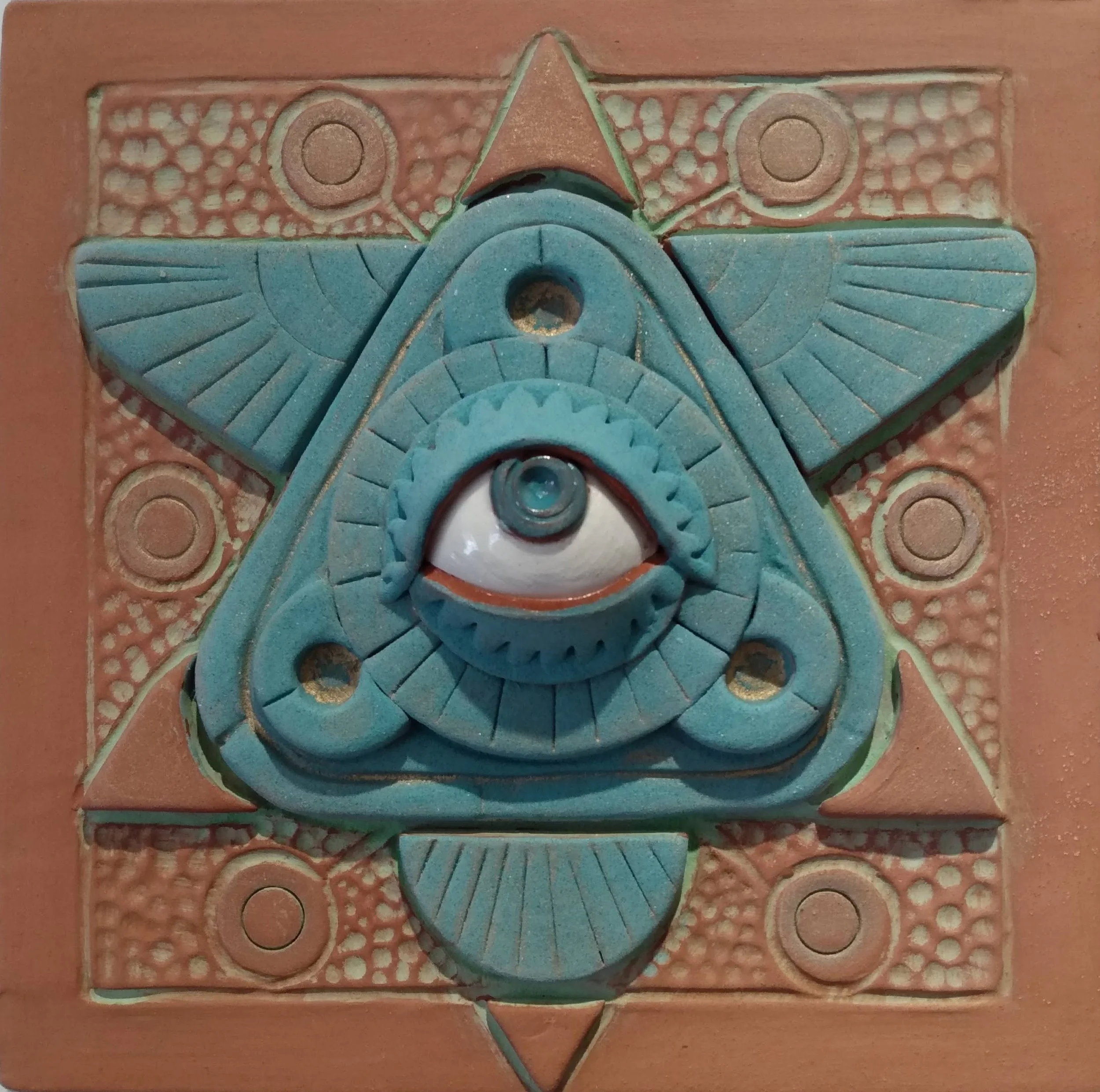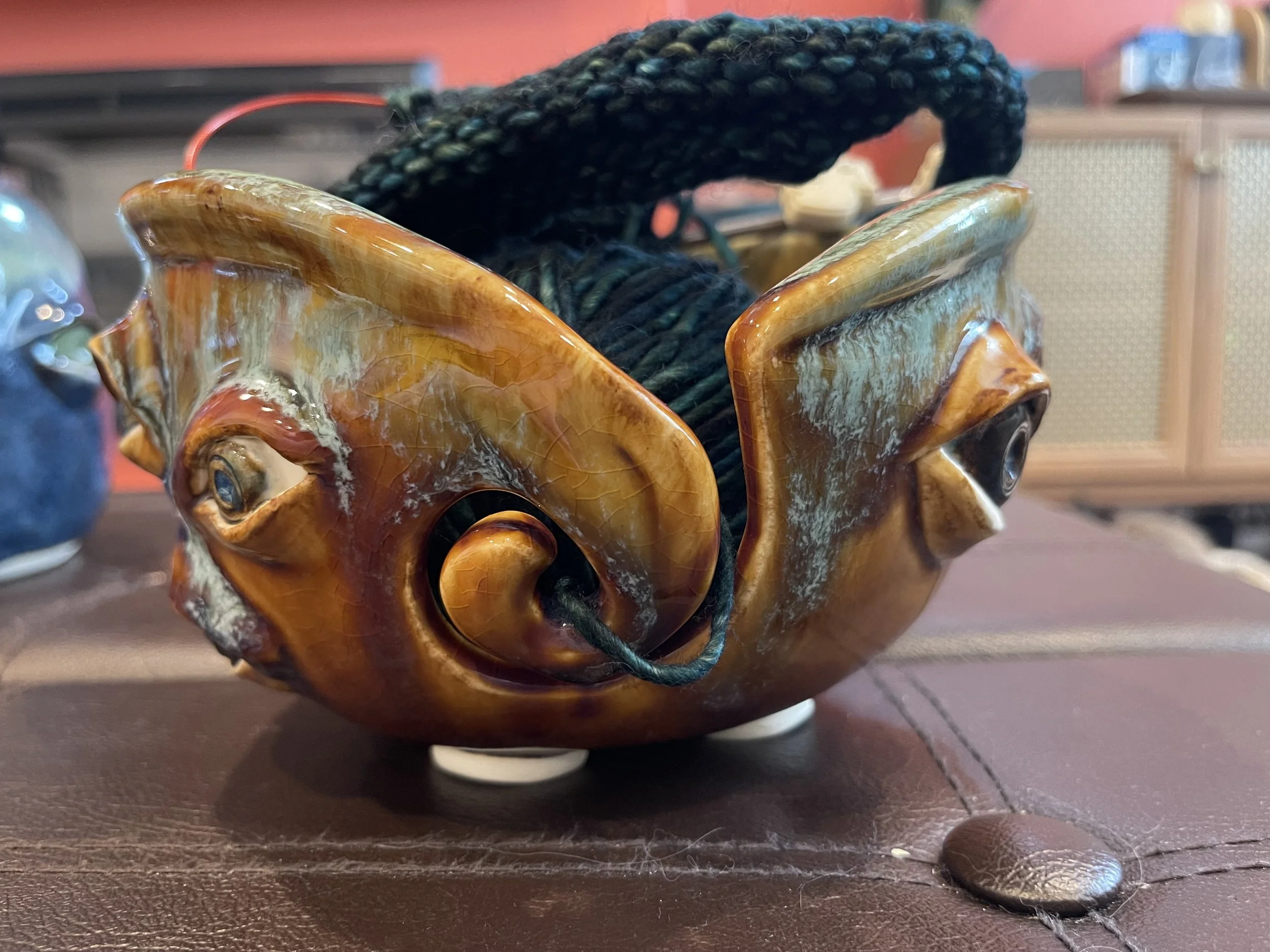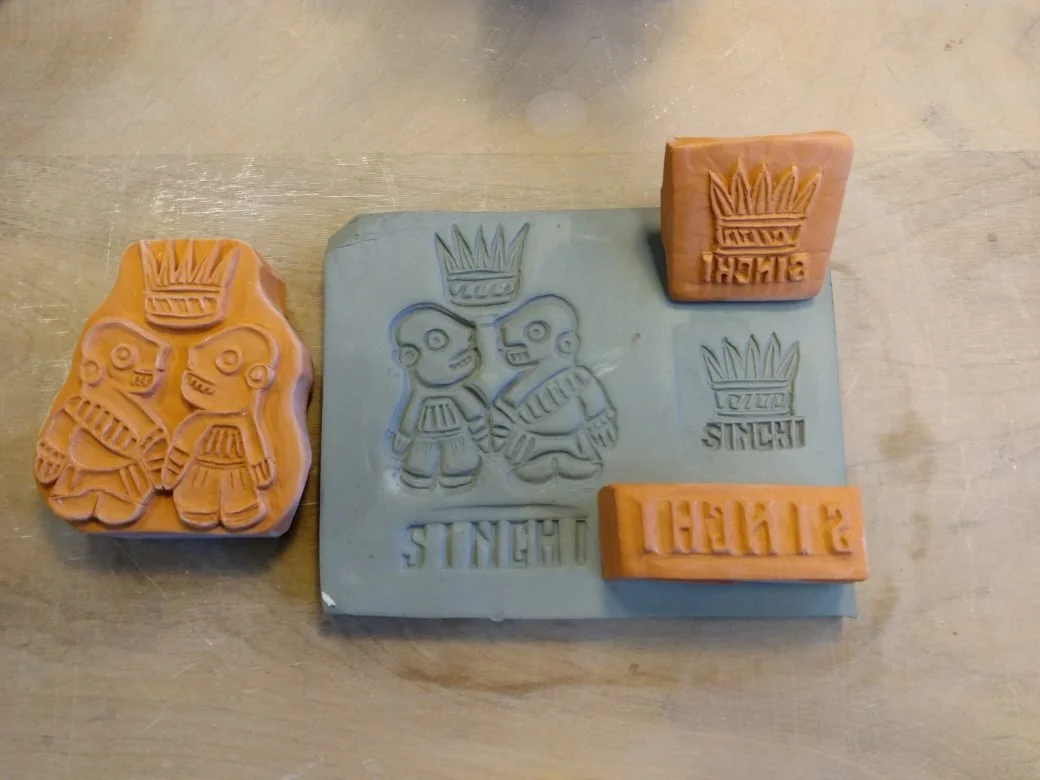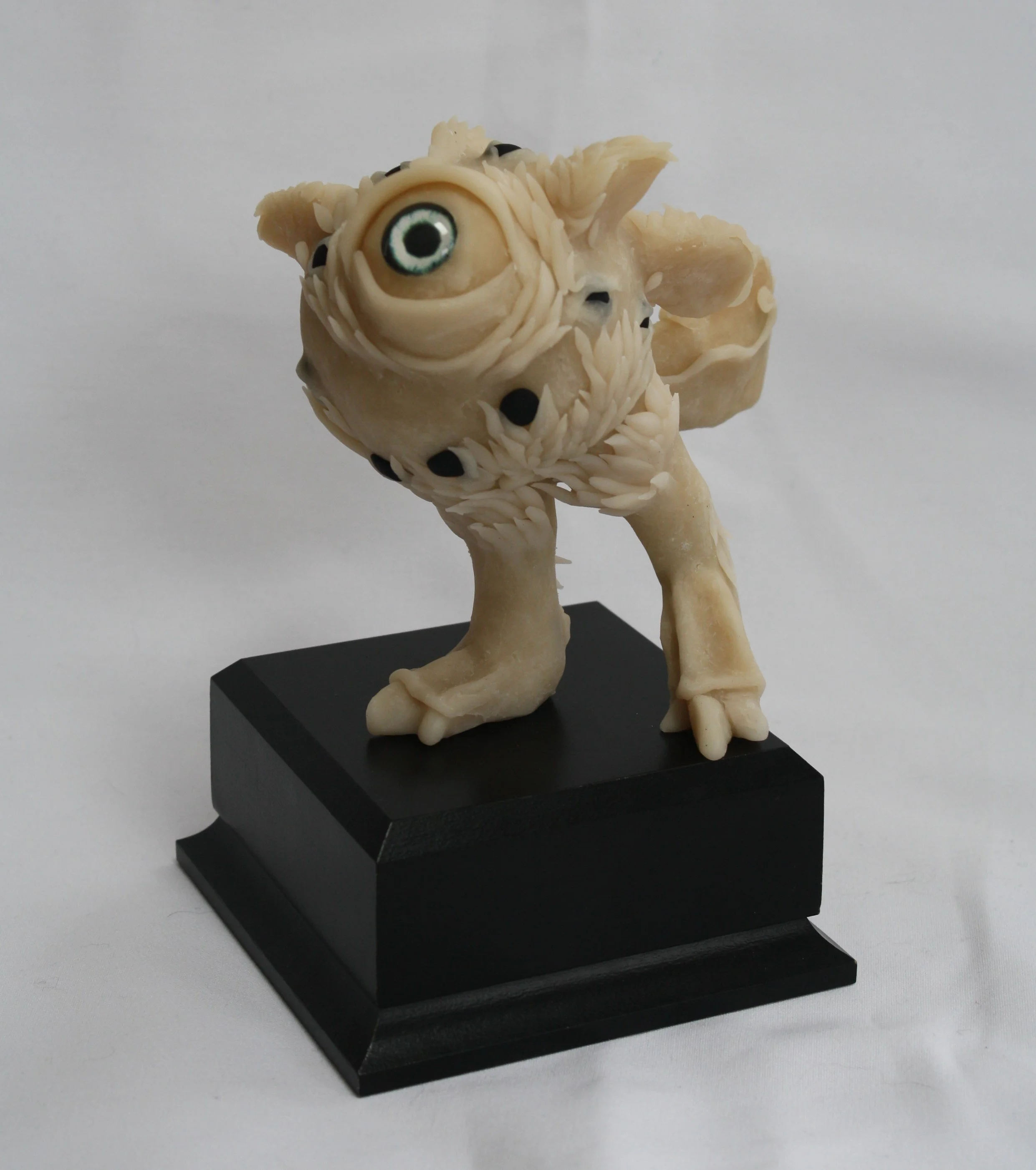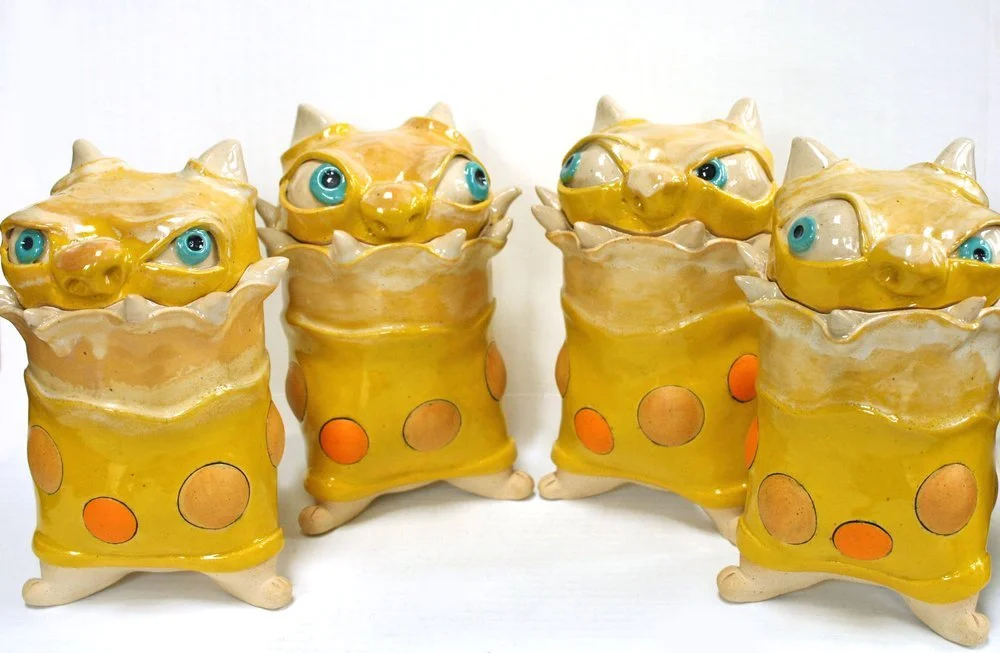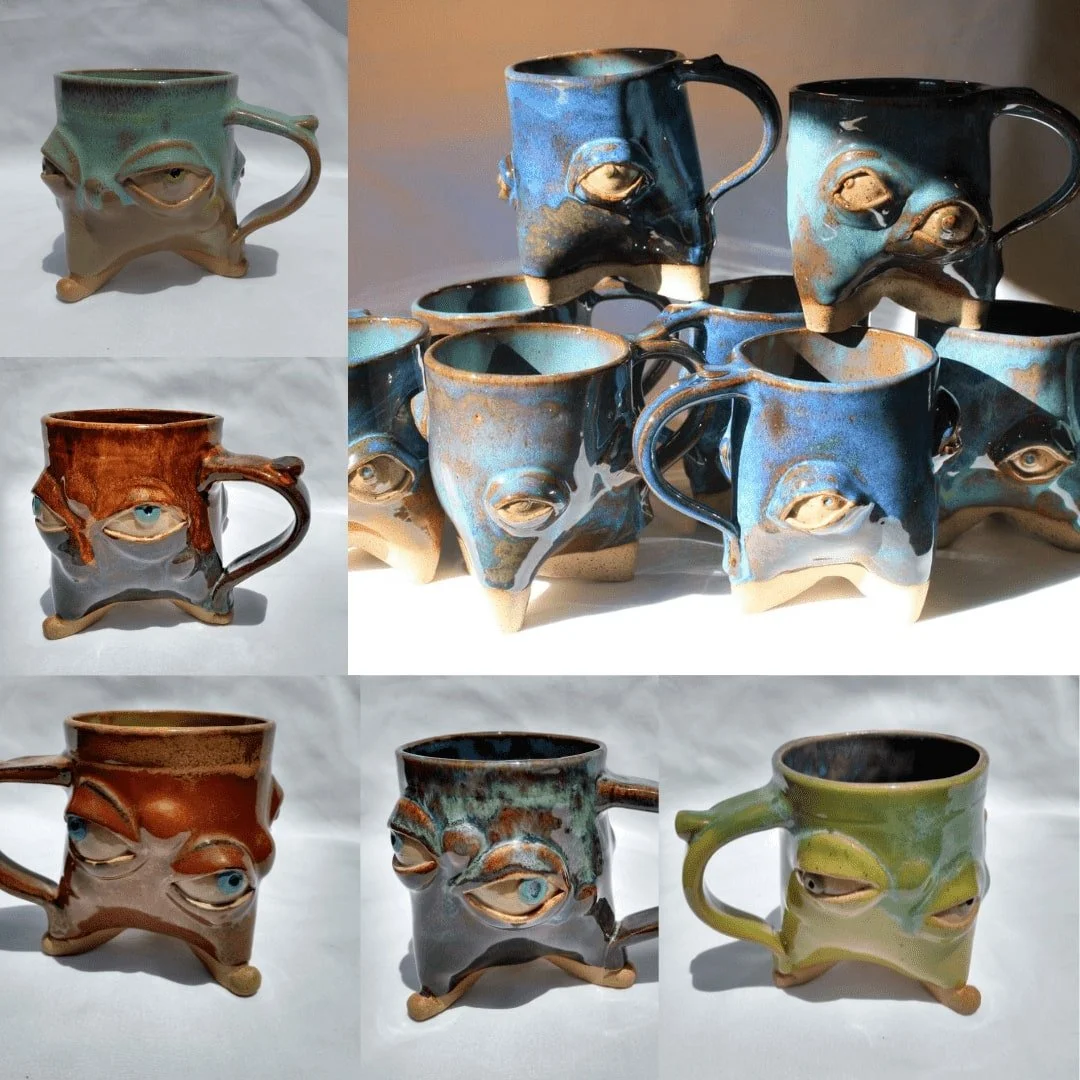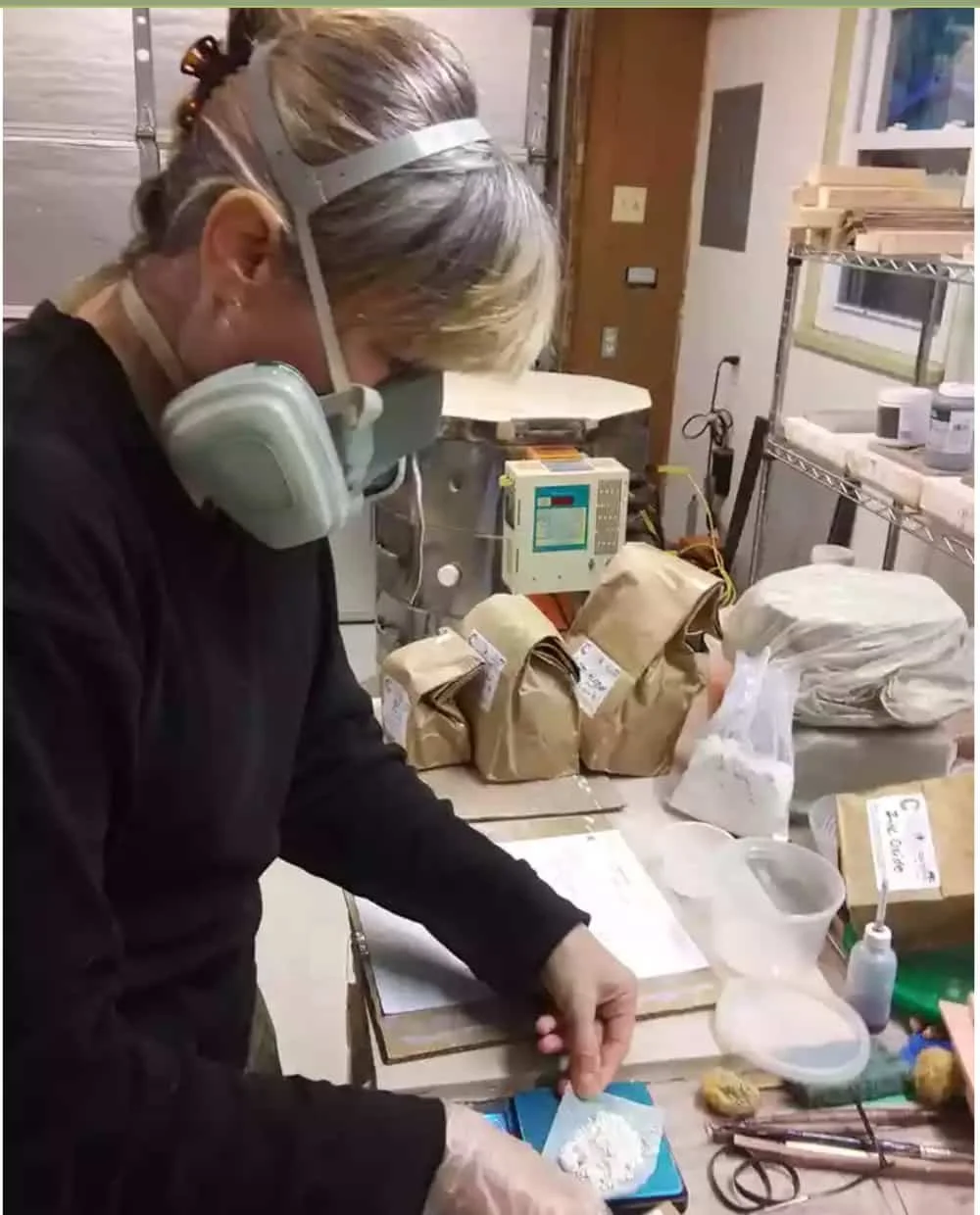In the summer of 2018, I asked a pottery mentor about experimenting with mixing glazes from scratch. I’d gotten to a point in my ceramic work where I was becoming curious about the chemistry and wanting to have more control over the surface appearance of my work. Even more, I wanted to cut down on the cost of my glazes. Commercial glazes are hella expensive but worth it for the reliability, and making glazes from scratch was a nightmare!— or so I was told. I borrowed my mentor’s old binder of glazes and was eager to try some of them out. Alas, these were all Cone 10 glazes and completely useless to me for firing my ware at Cone 6.
Disappointed, I mulled it over for a few months and started to do some research. Well-known ceramists and authors of articles on the big ceramic sites post lots of recipes and offer suggestions, but it wasn’t until I found Digitalfire, Tony Hanson’s excellent site, that I became convinced that I just had to make my own glazes. The site is a crash-course in glaze chemistry and the glaze calculator is a complete gift. Hanson is a glaze chemist in the ceramics industry and the way industry does things is more efficient and rigorous than home pottery. Want to know how to make a properly melting matte glaze that’s not underfired? Or convert a glaze from Cone 10 to Cone 6? Want to prevent crazing? All of this info and more is available throught the 1000 or more articles available on the site. I return to his site again and again for the great resource he offers and the indispensible advice on how to troubleshoot glaze issues.
Channelling my inner Walter White.
Armed with information and more confidence, I sallied forth and bought a small supply of dry materials to stock my nascent glaze pantry. A pint of commercial glaze can be $20 but mixing your own is just a fraction of the cost. As you can see from the photo above, a respirator is a good idea as the fine particles of powdered clay, talc, feldspar, and oxides can be hazardous to the lungs.
With glaze calculators now availble online, I’m able to design stable glazes from scratch that will work properly. I’ve now tested over 200 glazes (because it’s just fun) but probably only rely on 10 “base glazes” for my regular glazing needs. These 10 give me a variety of glaze colors and they get tweaked occasionally as my sense of how I want my glazes to behave gets keener.
Thanks for reading! Feel free to drop your comments below and tell me what you’re thinking.
For more info on how to stay safe in your pottery and glaze studio when handling dry materials containing oxides or silica, check out this factsheet from the folks at ConsumerNotice here and happy potterymaking: https://www.consumernotice.org/environmental/silica-dust/.
First published on my Kest Pottery blog in 2020 and migrated here.
- October 2025 1
- September 2025 3
- July 2025 2
- June 2025 1
- May 2025 4
- April 2025 4
- March 2025 4
- December 2024 2
- September 2024 1
- June 2024 1
- March 2024 1
- February 2024 1
- January 2024 2
- December 2023 2
- November 2023 1
- October 2023 4
- August 2023 1
- July 2023 1
- June 2023 2
- May 2023 2
- April 2023 2
- March 2023 4
- February 2023 3
- January 2023 6
- December 2022 8
- November 2022 26


